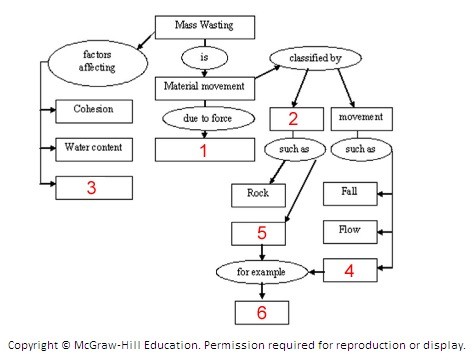 Complete the concept map for number 3.
Complete the concept map for number 3.
A. Surge
B. Slump
C. Slide
D. Slope
Answer: D
You might also like to view...
Some older cars vibrate loudly when driving at particular speeds. For example, at 65 mph, the car may be most quiet, but at 60 mph, the car rattles uncomfortably. How is this analogous to the quantized energy levels of an electron in an atom?
A. The vibrating car is analogous to one of the energy levels of the electron, which is the point at which the electron experiences resonance. B. There can be no analogy between a vibrating car and the quantized energy level of an electron in an atom since electrons don't vibrate. Doing so would cause the atom to break apart. C. A car is designed for maximum performance at particular speeds under given road conditions. Likewise, electron energy level transitions are smooth if they occur while the atom is in a low energy state. Changing the speed of the car for the road conditions is similar to subjecting the atom to unusual energy conditions. D. New cars and small atoms don't share this behavior because modern technology produces better cars and small atoms don't have enough electrons to move among quantized energy levels to cause vibration.
In which of the following locations is a rainshadow desert normally found?
A. in the centre of a large surface anticyclone B. in polar regions where the air is cold and dry C. on the back (western) side of a large thunderstorm D. on the downwind side of a mountain range
A mineral has a value of 8 on the Mohs hardness scale. What could this represent?
A) The mineral is relatively hard. B) The mineral is the hardest of all minerals. C) The mineral is relatively soft. D) The mineral is the softest of all minerals.
Picoplankton number 100 million individuals in a liter of seawater at all depths in the ocean
Indicate whether the statement is true or false